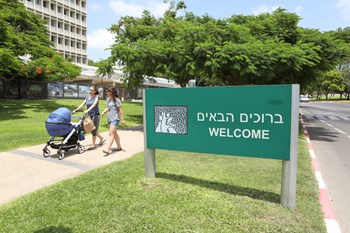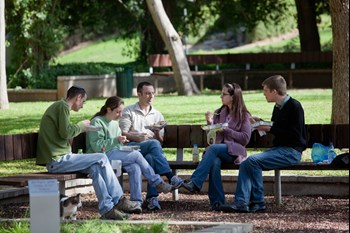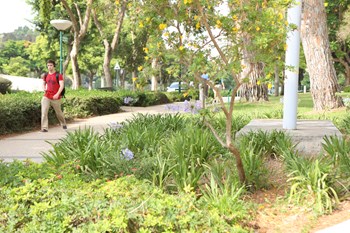
Even during summer, the campus is busy with new arrivals, new initiatives, and new breakthroughs
The dog days of summer are an excellent time to sit in a cool place and take a look at what’s happening on the Weizmann Institute campus, where the gardens are lush and the labs as busy as ever. There are forward-looking scientific advances and considerable growth – hiring the right people, building the right infrastructure – and we’d like to share this progress with you.
The latest recruits are coming. This is an impressive new crop of talented young women and men, many of whom already hold patents and awards and have shaken up their fields. Their range of skills reflects the Institute’s scientific diversity and areas of growth.
- Yaron Antebi, a physicist-turned-biologist, joins the Department of Molecular Genetics in August.
- Yael Kiro is a geochemist who recently joined the Department of Earth and Planetary Sciences.
- Filipe Natalio is an archaeological biochemist who recently joined the Scientific Archaeology Unit.
- Serge Rosenblum, who studies quantum computing, joins the Department of Condensed Matter Physics in March 2019.
- Moran Shalev-Benami studies cellular elements linked to human diseases; she joins the Department of Structural Biology in December 2018.
- Ran Tessler, mathematical physics researcher, joined the Department of Mathematics this year.

Of course, even the most brilliant scientists can’t do their best work without the correct infrastructure and support.
That’s why the campus itself continues to grow: construction has begun on the Institute for Comparative Medicine, which will expand the Preclinical Research Facility. Once complete, the compound will be Israel’s largest preclinical research facility, enabling life sciences discoveries to be tried and tested before advancing to the biomedical world and clinical trials. This facility will truly be a bridge between basic research and clinical research, enabling promising research in neuroscience, cancer, metabolic disorders, and autoimmune diseases to go to the next level, paving the way to eventual application for human use.

The Institute is undertaking another flagship project in a quite different yet equally important area: artificial intelligence, or AI. The new Artificial Intelligence Institute for Scientific Collaboration will drive understanding and innovation in the field and make high-performance computing and machine-learning tools available across an array of scientific areas.
The AI Institute – which will be Israel’s most advanced computing infrastructure entity – will also be a crucial response to the challenge of “big data.” This is a new field born of the massive amount of information – from genetics to proteins, from high-energy physics to medicine – produced by today’s advanced technologies. It is hard for researchers to utilize this data, however, because current computational approaches are insufficient. By finding the gold buried in big data, AI will advance innovations in a number of life-enhancing areas.
An earlier flagship project has its fifth birthday this year. In its short life, the Nancy and Stephen Grand Israel National Center for Personalized Medicine, or G-INCPM, has already advanced biomedical studies across academic institutions and hospitals throughout Israel, supporting hundreds of projects that could help fight disease and improve lives. Seeing these plans come to fruition is gratifying and motivating.

And in one more example of excellence: our own Profs. Meir Lahav and Leslie Leiserowitz received this year’s EMET Prize. The prestigious award honors excellence in academic and professional achievements that have far-reaching influence and make a significant contribution to society. The two Weizmann chemists were recognized for their revelations of self-assembly in chiral structures: those containing molecules that are mirror images of each other. This field has major implications for drug development.
Recognition of these scientists is another reminder of the importance of basic research as the initial building block for the creation of medicines and therapies – and of the importance of the people behind the discoveries.
